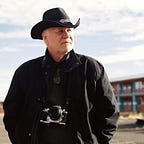10 Subtle Things You Can Do to Become a Slightly Better Photographer
They don’t take a lot of time but can be very effective.
There’s more to being a photographer than having great gear, a supermodel girl/boyfriend, a Lamborghini for around town, a mansion (or two) in Cabo, and a custom-painted Lear at the ready for those last-minute headshot gigs.
No, really, there is.
Hear me out.
I believe in microsteps, little things that add up to bigger things.
I also believe that the way you do one thing is the way you do everything.
And I have the receipts all around me. You have them too.
There are little things that we can do as photographers that are subtle, and take little effort. At least they should take little effort.
If you don’t know how to be nice to people, you should bail now and catch some “Karen” videos over on YouTube.
So here is a nice little list of subtle things you can do to become just a little better as a photographer.
Always balance critique with praise
Next time you’re critiquing a photo—yours or someone else's — make it a habit to highlight at least one thing you love about it before you drill into what could be improved. It’ll boost your, and their, morale and help you focus on positivity. Look for positivity in every critique.
Take time to find the hidden shot
Before you fire off 100 frames, slow down and take the time to really look around. Sometimes the best shot is just a slight angle change or a step to the left. Train your eyes to see what others might miss. I believe there is a photo in front of you no matter where you are. Slow down and let yourself see it.
Shoot every day, even if it’s just with your phone
You’ve probably heard this a thousand times, but it’s true: Practice makes progress. Make a photo or two every day, even if it’s just a quick shot with your phone. The goal isn’t a perfect shot, the goal is to become more and more comfortable with framing and composing a photograph.
Edit one photo per day
Editing can be tedious, but the more you do it, the better you get. Try editing one photo per day to sharpen your skills, and get comfortable with your post-processing software. Learn one new Photoshop skill per week, and practice that on a new image every day.
Limit yourself to one lens for a week
Or perhaps a retro Point and Shoot from an old drawer you forgot about. Instead of carrying a whole bag-o-gear, stick with just one lens or camera for a week. It forces you to think creatively and makes you more intentional with your shots. No, a phone camera does not count. A camera camera is what we need.
Master one lighting technique this month
Pick one lighting technique — whether it’s natural light, a single flash, or even window light — and go deep. Experiment with different angles, intensities, and times of day until you feel like you really own it. Find YouTube videos, or ask peers for ideas. You can master lighting by being deliberate in what you learn.
Look at photos you don’t like and figure out why
Spend 5 minutes scrolling through a feed or portfolio and choose images that don’t whisper softly to you. Ask yourself what’s missing or what feels off, and use those insights to strengthen your own work. Knowing what doesn’t float your boat is better than looking for what does… and it is a heck of a lot faster.
Start a ‘Lessons Learned’ journal
After each shoot, jot down what worked, what didn’t, and what you’d try next time. It doesn’t have to be fancy — a simple notebook or notes app will do the trick. This reflection will help you spot patterns and track progress. I always do a post-mordem of a shoot. Whether commercial or road trip. It is one way to make the best of whatever happened… good OR bad.
Give yourself a 10-shot limit
Challenge yourself to take only 10 shots per scene or subject. This forces you to slow down, think about composition, and avoid the spray-and-pray mentality. Imagine you are back in the 80s and have only one roll of film in our 6x7 camera. You gotta get more than one shot, right? So make every frame count.
Move your feet before your zoom
This is one of my favorites; instead of zooming in or out, take a few steps closer or farther away. This subtle physical movement can change the relationship between your subject and its surroundings in unexpected ways. There is a difference between a prime lens and a zoom lens as you move toward and away from the subject. Seeing that difference is, ahem, eye-opening.
Being a photographer is special, at least I believe it is.
But that means more than just having the coolest new mirrorless beast, it is a calling that allows you to view and capture the world.
One more short one.
Observe without your camera
Spend 10 minutes just watching light and shadow without lifting your camera. Train your eye to notice the subtleties of light before you even start shooting. I love to do this when I am in non-shooting situations. I try to find the shot, then I imagine how I would light it.
This works great when you are in a little coffee shop in the mountains of Colorado, but can be a bit more difficult in the bread aisle of Walmart.
Just sayin’
See y’all soon.
(All photos by the author from the book “Maine, 2014”. All rights reserved.)
Hi, I’m Don Giannatti, a photographer and mentor for up-and-coming photographers. You can find me on my website, Don Giannatti, and at my Substack site, where I also publish for creative people.
